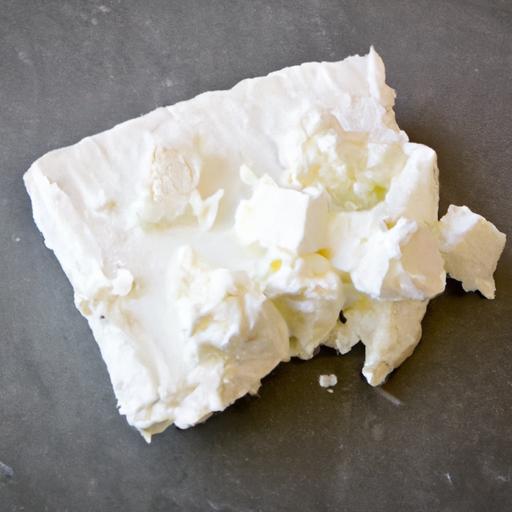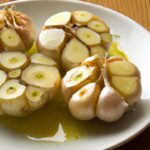There’s something irresistibly magical about the creamy tang of fresh feta-a cheese that elevates humble salads, brightens roasted vegetables, and transforms everyday dishes into Mediterranean masterpieces. While many reach for store-bought blocks wrapped in brine, the true cheese enthusiast knows that the journey to crafting your own homemade feta is where the real delight begins. In this ultimate guide, we’ll unravel the art and science behind creating that luscious, crumbly texture and bold flavor right in your own kitchen. Whether you’re a seasoned cheesemaker or a curious culinary explorer, get ready to dive into the creamy world of feta like never before.
Crafting creamy feta is a delightful journey that blends art with science, resulting in a luscious cheese that elevates any dish. Originating from the sun-drenched hills of Greece, traditional feta boasts a crumbly yet creamy texture cultivated through precise techniques and quality milk selection. My passion for homemade cheeses led me to perfect this recipe, uncovering the secrets behind that signature smoothness and tang that make feta irresistible.
Prep and Cook Time
Preparation: 15 minutes
Cooking & Curdling: 1 hour
Aging: 7 to 14 days
Yield
Approximately 1.5 pounds of creamy feta cheese
Difficulty Level
Medium – Ideal for passionate home cooks ready to explore cheese-making.
Ingredients
- 1 gallon whole sheep’s milk (or a mix of sheep and goat milk for authenticity)
- ¼ teaspoon mesophilic starter culture
- ½ teaspoon liquid calcium chloride (diluted in ¼ cup water, optional for pasteurized milk)
- ¼ teaspoon liquid rennet diluted in ¼ cup cool, non-chlorinated water
- 2 teaspoons sea salt or kosher salt, divided
- Filtered water for brine
Instructions
- Warm the Milk: Gently heat the milk to 86°F (30°C) in a large, heavy-bottomed pot over low heat, stirring occasionally for even warming.
- Add Starter Culture: Sprinkle the mesophilic culture evenly over the milk surface. Let it rehydrate for 2 minutes, then stir gently for 30 seconds to incorporate.
- Enhance with Calcium Chloride: (Optional) Stir in the diluted calcium chloride to improve coagulation, especially if using pasteurized milk.
- Add Rennet: Pour the diluted rennet gently into the milk, stirring slowly for 30 seconds. Stop stirring and cover the pot. Let the milk set undisturbed for 45 minutes to 1 hour, until a clean break forms.
- Cut the Curd: Using a long knife, cut the curd into ½-inch cubes. Let rest for 5 minutes to firm up.
- Cook the Curds: Slowly raise the temperature to 95°F (35°C) over 30 minutes, stirring gently every 5 minutes to prevent matting.
- Drain the Whey: Line a colander with cheesecloth and ladle curds carefully. Allow whey to drain naturally for 10 minutes.
- Salt the Curds: Sprinkle 1 teaspoon of salt over the curds and mix gently. Transfer to a mold or cheese hoop lined with fresh cheesecloth.
- Press the Cheese: Place a weight (around 5 pounds) on the curds to press out excess whey for 4 to 6 hours at room temperature. Flip the block every hour for even drainage.
- Brine and Age: Prepare a brine by dissolving 4 tablespoons of salt in 4 cups of filtered water. Submerge the pressed cheese block in the brine container. Refrigerate and age for 7 to 14 days to develop flavor and creamy texture, turning every other day.
Chef’s Tips for Success
- Milk Choice Matters: Sheep’s milk offers the highest richness and those buttery undertones essential for creamy feta. Mixing with goat milk adds complexity without sacrificing creaminess.
- Temperature Precision: Maintain consistent temperatures during culturing and cooking to encourage optimal curd formation and texture.
- Brining Duration: Longer brining yields tangier feta; adjust to taste but avoid over-salting by monitoring daily.
- Storage: Keep your feta submerged in fresh brine and refrigerated. Consuming within 3 weeks ensures peak flavor and creaminess.
- Make-Ahead: Cultured curds can be pressed and held lightly salted before brining for up to 24 hours if you need to pause the process.
Serving Suggestions
Pair your homemade feta with vibrant heirloom tomatoes, fresh oregano, and a drizzle of extra-virgin olive oil for a classic Mediterranean accompaniment. Crumble over warm roasted vegetables, toss with fresh arugula salads, or create a dazzling baked feta dip seasoned with lemon zest and chili flakes. Garnish with cracked black pepper and a sprig of fresh thyme to enhance both its creamy texture and tangy complexity.

| Nutrient | Per 100g |
|---|---|
| Calories | 264 kcal |
| Protein | 14 g |
| Carbohydrates | 2.5 g |
| Fat | 21 g |
For those interested in deepening their cheese-making expertise, explore our guide on crafting homemade goat cheese. Also, find useful scientific insights on milk coagulation at the Dairy Science Foundation.
Q&A
Q&A: Crafting Creamy Feta – Your Ultimate Homemade Cheese Guide
Q1: What makes feta cheese uniquely creamy compared to other cheeses?
A1: Feta’s signature creaminess comes from its brined aging process and the use of sheep’s or goat’s milk, which have higher fat content than cow’s milk. This combination creates a crumbly yet luscious texture that melts beautifully on your palate.
Q2: Can I make feta cheese at home without fancy equipment?
A2: Absolutely! While professional cheese makers use specialized tools, homemade feta relies on simple kitchen essentials: fresh milk, starter cultures or rennet, cheesecloth, and a brine solution. Patience and attention to detail replace expensive gadgets.
Q3: How long does it take to craft your own creamy feta?
A3: From start to finish, expect about 2 to 3 days. The initial curdling and draining take a few hours, but aging in brine for at least 24 to 48 hours is crucial to developing that classic tang and creaminess.
Q4: What tips ensure my homemade feta is perfectly creamy and not too crumbly?
A4: Use full-fat sheep’s or goat’s milk for richness, maintain precise temperatures during curd formation, and don’t over-press the curds-letting some whey remain preserves softness. Also, aging your cheese in a well-balanced brine encourages the perfect creamy texture.
Q5: Can I experiment with flavors while making feta at home?
A5: Definitely! While traditional feta is wonderfully simple, you can infuse herbs like oregano or thyme into the brine, add cracked peppercorns, or even a splash of lemon zest for a personalized twist on this classic.
Q6: What’s the best way to store homemade feta to keep it creamy?
A6: Store your feta submerged in its brine inside an airtight container in the fridge. This keeps the cheese moist, preserves flavor, and maintains that creamy consistency for up to two weeks.
Q7: Is homemade feta healthier than store-bought versions?
A7: Homemade feta can be healthier because you control the ingredients-no preservatives or additives-and can choose organic milk. Plus, fresh cultures boost probiotic benefits, making your creamy creation not just delicious, but good for your gut too.
Q8: What dishes shine brightest with creamy homemade feta?
A8: Your creamy feta will elevate everything from Greek salads and spanakopita to roasted veggies and flatbreads. It’s also divine crumbled over fresh watermelon or stirred into creamy pasta for a tangy, luscious burst.
Ready to roll up your sleeves and craft your own creamy feta masterpiece? With a little time and care, your kitchen will be home to one of the most versatile, flavorful homemade cheeses around!
Final Thoughts
As you wrap up your creamy feta journey, remember that crafting this tangy delight at home is more than just a recipe-it’s an art form that connects you to centuries of tradition and a world of flavor. With patience, passion, and a pinch of curiosity, your homemade feta will transform everyday meals into extraordinary experiences. So, roll up your sleeves, embrace the culture of cheese-making, and let your kitchen become a sanctuary where simple ingredients turn into creamy treasures. Here’s to delicious adventures, one crumbly bite at a time!


